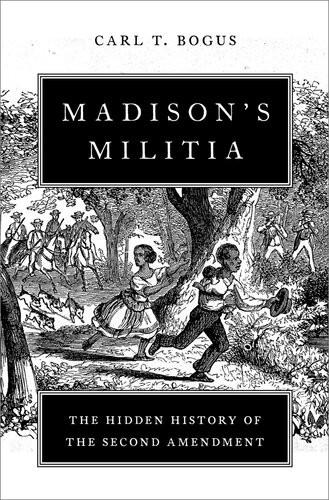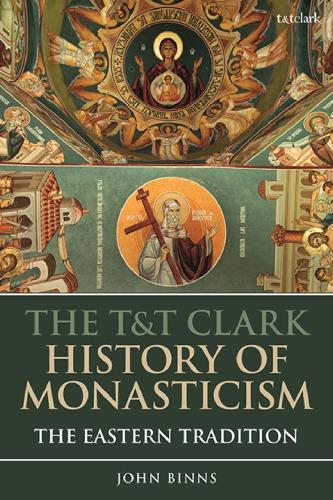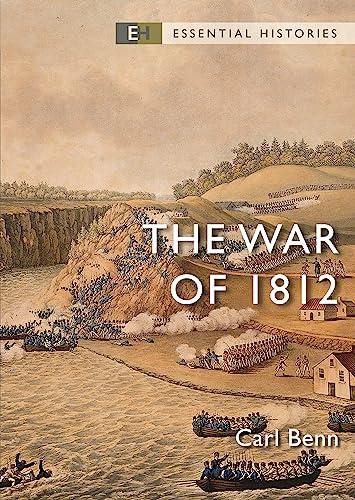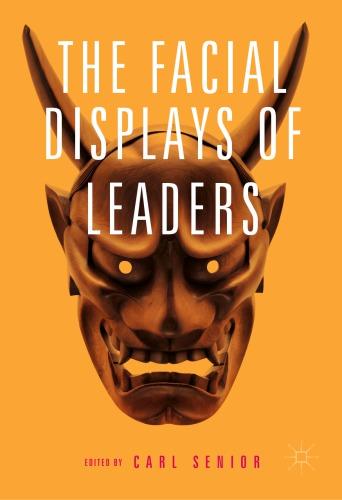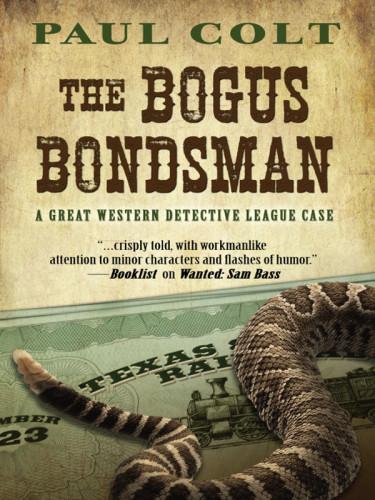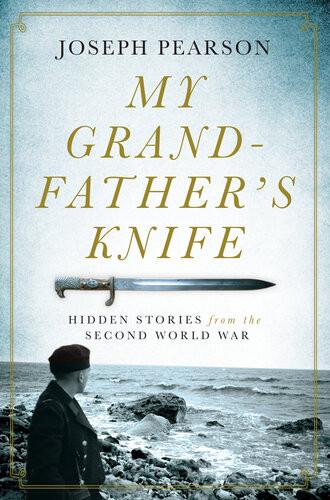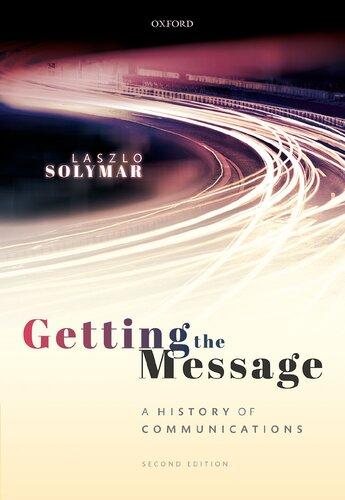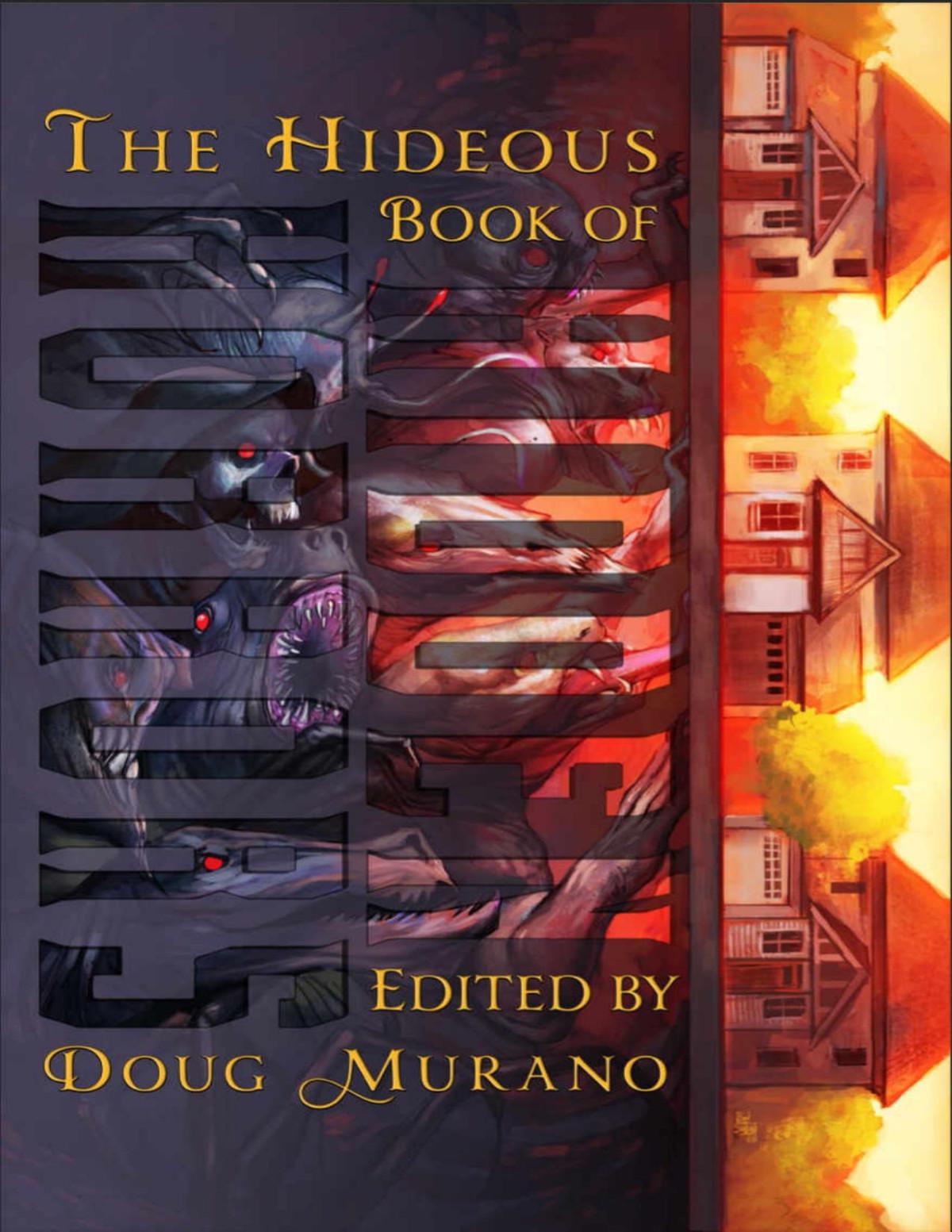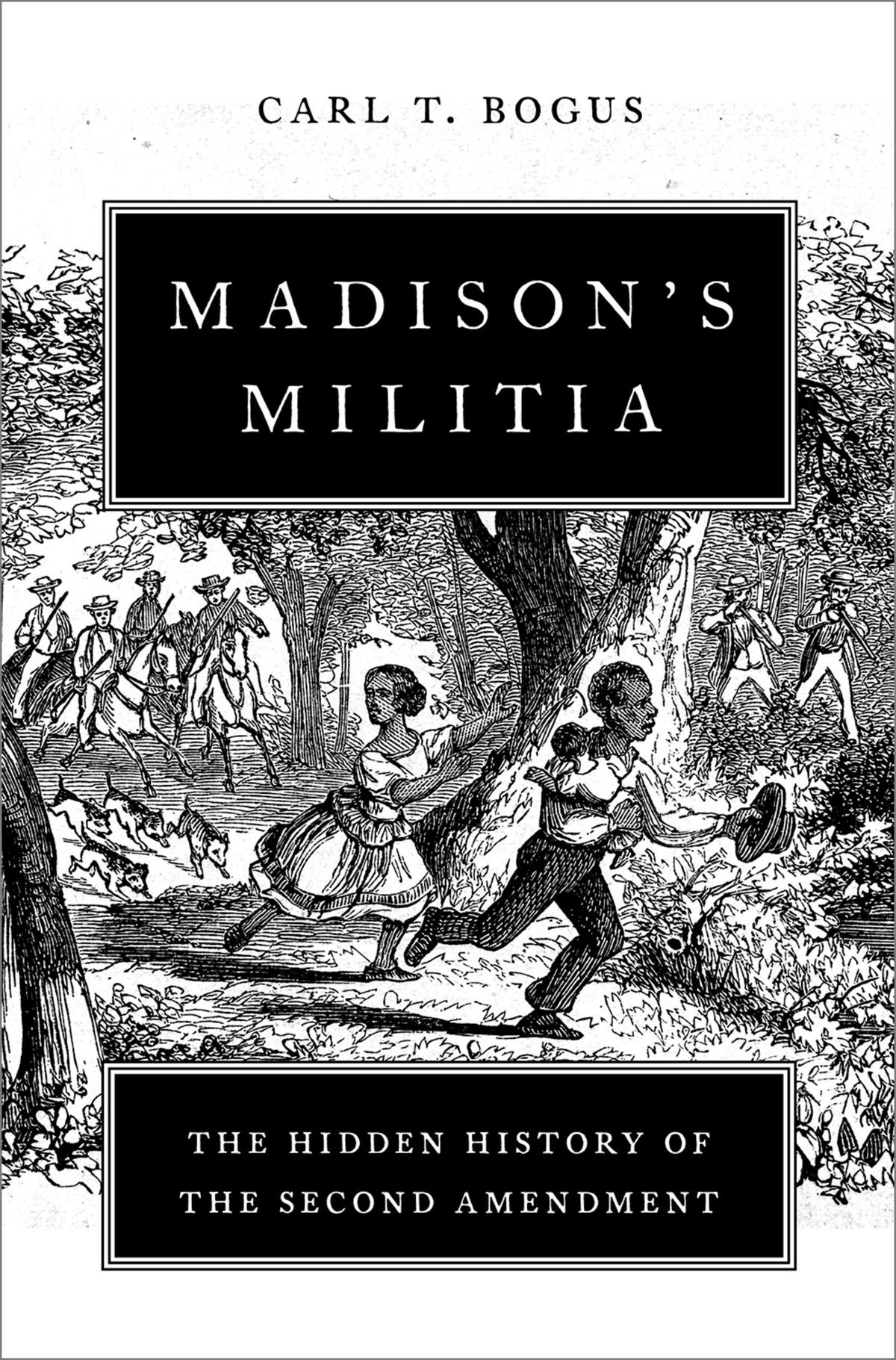ForWilliamandDov
CONTENTS
Introduction
1. Showdown in Richmond
2. Debate in Richmond
3. Decision in Richmond
4. Southern Terror
5. The Militia—War in the North
6. The Militia—War in the South
7. Mr. Madison Goes to Congress
8. The Ghost of Patrick Henry
9. The English Declaration of Rights of 1689
10. Chimeras of Liberty
Conclusion
Author’s Note
Notes
Index
Introduction
A NIGHTMARE HAD been haunting Carolinians. In the fall of 1734, readers of the South Carolina Gazette learned of three separate revolts on sailing ships transporting Africans to bondage in the New World. In all three incidents, the Africans killed the ship’s captain, and in two of the incidents the Africans took full control of the ship and its cargo. A few months later, the paper reported that Black slaves had revolted on St. John in the Virgin Islands and “entirely massacred all of the white people on that island, consisting of about two hundred families, and were very inhuman in the executions and murders.”1 These incidents were more than concerning—they were downright frightening—in a colony (or province as South Carolina was then formally known) in which nearly two-thirds of the residents were enslaved Blacks.2
The nightmare turned real in the still-dark, early morning of Sunday, September 9, 1739, on the banks of the Stono River, about fifteen miles due west of Charleston (or as it was then called, Charles Town).3 About twenty slaves broke into Hutchenson’s Store, which was probably a barn-like building serving as both a general store selling foodstuffs, clothing and shoes, tools, and other goods, and a warehouse for rice bound for export from the docks in Charleston.4 The slaves’ leaders were named Jemmy and Cato. No one today knows much about them, but, according to his descendants, Cato’s masters had taught him to read. That was not commonplace; Whites were afraid that reading could give slaves ideas. These slaves had not come to steal food, drink, or clothes. They had come for guns and ammunition. They decapitated two White men who were, for reasons unknown, in the closed store, and
put their severed heads on the front steps, publicly announcing for all to see that they were in open rebellion.5
The armed band of slaves marched west on Pons Road. Some speculate they were heading for Spanish Florida. During the preceding year, Spain issued a royal edict promising freedom to escaped slaves who made their way to Florida. But Gracia Real de Santa Teresa de Mose, the northern outpost where Spain established a community of free Blacks, was about 275 miles away. If the slaves’ primary goal was to get there, one assumes they would have moved as quickly and surreptitiously as possible. That was not what they did. On eight occasions, they left Pons Road to invade the homes of plantation owners and other colonists.6 Once they were driven off; and once, a slave hid his master and told the rebels he was not at home. The rebels pillaged the other six houses, set them ablaze, and killed everyone inside—a body count totaling forty slave owners and family members before the day was through.
The targets were not indiscriminate. The rebels attacked the home of the largest plantation owner in the area, and those of two other major plantation owners, too; but they passed by the home of at least one other very large plantation owner. They attacked the homes of two justices of the peace; but when they passed Wallace’s Tavern, they left the proprietor alone because, they said, “he was a good man and kind to his slaves.”7
We can confidently conclude the rebels were not trying to reach freedom in Spanish Florida because they did not try to conceal their whereabouts. Just the opposite: They beat drums, flew banners, and called out “Liberty!” to other slaves, exhorting them to join the insurrection. Their ranks swelled to somewhere between sixty and one hundred. They had come from eight different plantations.8
No one knows how large the rebellion would have grown if not for a bizarre coincidence. A group of five White men, on their way to Charleston for the South Carolina Assembly’s new legislative session, happened to ride within eyesight of the rebels. One member of the group was Dr. William Bull II, the lieutenant governor of South Carolina and one of the province’s officials most concerned about the
potential for slave insurrections. In a letter just four months earlier, Bull had warned that the colony’s “Negroes, which were their chief support, may in little time become their enemies, if not their masters, and that this government is unable to withstand or prevent it.”9 One can only imagine Bull’s horror as he saw a sizable group of armed slaves in open rebellion.
Bull spurred his horse on to the Presbyterian Church at Wiltown Bluff, a couple of miles south, where Sunday services were in progress.10 A few weeks earlier, the Assembly had passed the Security Act, which required all White males who were responsible for bearing arms in the militia—that meant all able-bodied White men between the ages of sixteen and sixty—to take guns and ammunition with them to church on Sundays and on Christmas. While the Security Act would not formally take effect for three more weeks, planters hardly needed the penalty of a fine to stimulate compliance. This was, after all, exactly the eventuality they long feared. When Bull arrived at the church, therefore, an armed contingent of militia was already there.
Leaving frightened women and children at the church, the men rode off in pursuit of the rebels. By four o’clock in the afternoon, perhaps as many as one hundred armed and mounted militiamen, led by Captain John Bee, found the slaves in an open field about ten miles southwest of where the lieutenant governor had spotted them earlier. They dismounted and attacked the rebels on foot.11 Some slaves fled in the face of the advancing militia; more than forty stood their ground and fought. Witnesses say that the battle was intense and that the slaves appeared skilled in the use of arms and fought in military formation, but the militia—better armed, better trained, and outnumbering the slaves who fought—prevailed. Twenty-one Whites died in the battle. Forty-four slaves died in the battle or were captured, questioned, and executed on the spot. The planters took pride in not torturing the slaves and instead giving them an “easy death,” but they, too, decapitated those they killed and placed their heads on pikes along Pons Road. Forty-four heads, spaced some distance apart, provided a chilling display. Slaves who returned to
their plantations were, if identified, also immediately shot or hanged. There was a second, smaller battle six days later when militia found a group of slaves who had escaped the initial engagement. A few slaves continued to evade capture, including one who was caught and hanged three years later.12
Had the Stono rebels harbored some hope—even just a glimmer— that the rebellion would be large enough to repel the inevitable counterattack by the militia and somehow survive? Maybe; desperate people will believe what they must. But in their hearts, they must have known that was unrealistic. Even if the rebellion had become large enough, and well-armed enough, to repel the first assaults, militia would come from further and further away—from all of the South Carolina Low Country, from farther-flung areas in western South Carolina, from Georgia and from North Carolina, too, until the rebellion was destroyed. The word of the rebellion would spread among Whites faster than among enslaved Blacks because Whites had horses. And the Whites would show no mercy. All the rebels could reasonably hope for was to kill as many Whites as possible before they themselves died free. The Stono Rebellion was, in short, a suicide mission.
None of this was lost on the White population. As historian Peter Charles Hoffer observed, after the Stono Rebellion no White “could ever fool himself or herself again that slaves were content in their chains.”13
There had, however, been fears of slave uprisings in South Carolina long before the Stono Rebellion. In 1734, a visitor to the colony recorded in his diary that slaves “are generally thought to watch [for] an opportunity of revolting against their masters, as they have lately done in the islands of St. John and St. Thomas.”14 Prior to Stono, South Carolina had an extensive slave patrol system. Groups of five men, led by Captains of Patrol, made regular rounds, usually on horseback, to stop and question slaves who were not where they should be, ensure that groups of slaves were not meeting or assembling, search slave quarters for weapons and other
contraband, and administer punishments—from whippings to hangings—to slaves violating the rules.
Slave patrols were considered so essential to the security of the colony that patrollers were authorized to enter plantations, conduct inspections, and mete out punishments without the consent of plantation and slave owners. Men who volunteered for patrol duty were excused from militia drills. But Stono—then the largest slave rebellion on the American mainland—caused South Carolina and the South as a whole to heighten slave control measures. The South Carolina legislature directed that for at least three months, or until all of the Stono rebels were captured, “completely armed” militia patrol both banks of the Stono River every night.15 And henceforth, patrols became the direct responsibility of the militia, with every militiaman required to participate.16 Several militia garrisons were also established. The garrisons were not located at points that were important strategically to defend the colony from invasion; they were placed in the interior at points useful for slave control.17 According to one student of South Carolina military history, the Stono reforms completed a transformation of the militia “from a vital defensive agency to one whose principal duty was the supervision of slaves.”18
For a while, Georgia took a different approach. Within a year of the Stono Rebellion, it banned slavery within its colony.19 A South Carolina merchant, asked for his opinion, said Georgia was foolish. Whites could never work as well as Blacks in the rice fields because the work was too laborious and the heat too intense, and, therefore, “without Negroes, Georgia can never be a colony of any great consequence.”20 For two decades, Georgia’s farmers watched their counterparts amass great fortunes on the rice plantations of South Carolina and the tobacco plantations of Virginia. The risks were undeniable; but the enticement became irresistible. In 1755, Georgia was ready to make its pact with the Devil: it repealed its prohibition on the use of slave labor and adopted South Carolina’s slave control system, lock, stock, and barrel.21
What has any of this got to with the origins of the Second Amendment? We’re coming to that.
Here is what the Second Amendment says:
A well regulated Militia, being necessary to the security of a free State, the right of the people to keep and bear Arms shall not be infringed.
This book deals with these questions, and these questions only: Why, in 1789, did James Madison write what became the Second Amendment to the United States Constitution? What did he want to accomplish? Why, after making a few changes to his initial draft, did Madison’s colleagues in the First Congress adopt the Second Amendment and propose it to the states?
Although I am a lawyer, this book is about history, not law. In the main, I shall avoid legal issues and arguments. For example, lawyers debate whether, in interpreting either the main body of the Constitution or its Amendments, courts ought to take into consideration what the men who wrote the provisions intended. Some argue that courts should focus on the text of the provisions and ignore “original intent.” Others argue that courts ought to give great weight to the intentions of the framers—in this case, Madison and his colleagues in the First Congress. Still others believe that courts should ignore the intentions of the framers and focus instead on how those who ratified the provision—in this case, state legislatures—understood the provision. And some maintain that what matters more than any of that is how the people at large understood the provision. These arguments can resemble debates about how many angels can dance on the head of a pin. For example, those who want to place the greatest weight on the intentions of the ratifiers, or the understanding of the people, can wind up arguing whether that should include legislators or people in the states of Massachusetts, Connecticut, and Georgia—three states that were part of the Union when Congress proposed the Bill of Rights but did not ratify the amendments (including the Second Amendment) until 1939. This book will not deal with such questions. If you are reading this book, I assume that you care why James Madison and his
colleagues in the First Congress wrote the Second Amendment without arguing why you should care.
Nor am I going to analyze or debate how courts or other legal scholars have interpreted the Second Amendment. Suffice it to say that historians often criticize judges, lawyers, and legal scholars for doing “law office history,” which means picking and choosing particular quotations and facts, and ripping them out of context to reach a desired conclusion.22 I am proud that, years ago, when I presented my thesis about the Second Amendment in a law review article, Professor Don Higginbotham, then the leading historian on military affairs in eighteenth-century America, held it up as an exception to the rule; that is, it was a historically contextualized argument by a lawyer.23 He also said my thesis was worthy of additional research. This book is the product of many years of additional thought and research, and I am committed to keeping faith with the principles expressed by the late Professor Higginbotham. I shall try to present history as it should be presented: focusing on people and the circumstances that caused them to think and act as they did. Happily, history is colorful, and putting facts and statements in context means placing them in the larger narrative in which they occurred—that is, to tell stories.
James Madison never explained why he wrote the Second Amendment or what it meant. Nor did his colleagues in the First Congress. That does not mean that we have embarked on a futile quest. Nor does it mean that the Amendment is doomed to be a Rorschach test on which everyone projects their own thoughts. The most reliable method of deducing why people acted as they did is to understand the imperatives that confronted them at the time. We do this all the time, especially when listening to politicians. We don’t have to be psychoanalysts or professional historians to do this successfully. We are, after all, human beings, and by putting ourselves in the shoes of other human beings, we can often understand what motivated them to do what they did. This can often lead us to a more reliable conclusion than simply accepting what someone claims their motives were. But we have to understand—
truly understand—the times, circumstances, and imperatives of James Madison and other key players. Moreover, Madison and his contemporaries lived in a different time than do we. Their world— eighteenth-century America—was not our world. So stepping into their shoes will take time and care. We need to bear in mind that, as one historian ably put it, “The Founders wrote the Second Amendment to solve their own problems, not ours.”24
There is nothing special about the method we shall follow. Historians agree that interpreting a text, statement, or idea—in this case, the Second Amendment—requires understanding the context in which it was made, who made it, and why. According to the famous historian Quentin Skinner, it is not sufficient “to concentrate simply on a given idea or a given text in itself.”25 Skinner stressed that we must recognize that ideas and statements constitute a response to immediate circumstances, and it is therefore essential to study “the context of other happenings which explains them.”26
The absence of explanations from James Madison and his colleagues means that there is no direct evidence about what the Founders intended. There is, however, considerable circumstantial evidence that bears upon the question. As someone who taught Evidence for decades in law school, I know that there is a common misperception about the relative strengths of direct and circumstantial evidence. Many people assume circumstantial evidence is weaker than direct evidence. Not so. One type of evidence is not inherently stronger or weaker than the other. The difference between the two is that direct evidence does not require making an inference from the evidence itself to a conclusion drawn from the evidence, whereas circumstantial evidence does require an inference. Here is the classic law school example. Suppose the question is whether it snowed last night. If Joe testifies that he went outside at midnight to walk his dog, and during that walk he saw it snowing, that is direct evidence. However, if Joe testifies that when he walked his dog after supper there was no snow on the ground, but that when he walked his dog again just before breakfast this morning there was a foot of snow as far as the eye could see, an
inference must be made from the evidence—no snow last night, a lot of snow this morning—to reach the conclusion that it snowed during the night. That is circumstantial evidence.
In that example, the direct and circumstantial evidence are of equal strength. (As sensible people, we can disregard outlandish possibilities such as someone had thousands of truckloads of snow delivered to play a practical joke on Joe.) In many instances, circumstantial evidence is stronger than direct evidence. We used to assume, for example, that eyewitness testimony was the gold standard in evidence, but we have learned from painful experience and rigorous studies that eyewitness testimony is often unreliable. People are often mistaken about what they believe they saw, not to mention that some people lie. So do not be put off by my telling you that we will be relying on circumstantial evidence. In fact, having to rely on circumstantial evidence is going to make our exploration more interesting.
Historian David Hackett Fisher has some useful observations about attempts to discern motives. He says that motives “are usually pluralistic, in both their number and their nature.”27 By that he means that people usually have a number of reasons for doing a particular thing. “[A] man who does something does it for every reason he can think of, and a few unthinkable reasons as well,” Fisher writes. By this he means, people have conscious and unconscious motivations, “which tend to coexist and interact.” I do not take Fisher to mean that we cannot try to discern those motivations and how much weight each had. A man asked a woman to marry him. Was he motivated because he loved her, because she was wealthy, because he was on the rebound from being jilted by a previous lover, or because of a combination of factors? In trying to sort that out, we would consider circumstances such as whether he treated the woman the way people treat those whom they love, how materialistic he was, how long ago his former lover broke up with him, and so on. We may have more faith in the inferences we draw from circumstantial evidence of this kind than from what the man himself claims was his reason for proposing marriage. Fisher puts
this even more starkly. He writes: “There can be no primary, direct evidence of any past motive. But there is a tacit logic of inference which can attain a high degree of probable accuracy.”28 We will not, therefore, be doing anything unusual in deducing James Madison’s motivations through circumstantial evidence.
In a sense, this is a mystery book. The mystery is why James Madison decided to write the Second Amendment. In a classic mystery, the author does not tell you who did it, and why they did it, at the beginning of the tale. But while we will be engaged in an exploration to solve a kind of mystery, it is not practical in this case to save the solution to end. So let me describe my thesis.
On Monday afternoon on September 7, 1787, the delegates who were still in attendance at the Constitutional Convention in Philadelphia after four grueling months of difficult and sometimes contentious debate, formed a line in accordance with the geographies of their states—North to South, with the two New Hampshire delegates going first, and the two Georgia delegates last —to sign the product of their work: the proposed Constitution of the United States. Of the fifty-five delegates who had attended some portion of the Convention, forty-one remained. Of those, thirty-eight signed. Three refused. It was three o’clock when they finished. Some made their way from the building we today call Independence Hall to City Tavern for a celebratory drink and to share a meal together.29 It is said a woman in the street called out to Benjamin Franklin to ask, “Doctor, what have we got? A republic or a monarchy?” and Franklin replied, “A republic, if you can keep it.”30
But, by its own terms, the Constitution would not be adopted until at least nine states ratified it. The Constitution required that each state elect delegates for a convention to make that state’s decision. Two of the three men who had refused to sign—Elbridge Gerry of Massachusetts and George Mason of Virginia—vowed to do everything in their power to prevent ratification.31 Over the next year, a battle ensued between federalists, who favored ratification, and antifederalists, who opposed it. As we know, three federalists— Alexander Hamilton, James Madison, and John Jay wrote a series
of newspaper articles supporting ratification, which were later collected and published as TheFederalist. Meanwhile, antifederalists were writing their own newspaper articles denouncing the Constitution and urging that it be rejected.32
When Virginia convened its Ratifying Convention in Richmond on Monday, June 2, 1788, ratification was in doubt. Eight states had ratified, but it looked as though if Virginia failed to ratify, there might not be a ninth. Besides, without Virginia, could the Union even be feasible? It was the largest state, the wealthiest state, and home to George Washington, Thomas Jefferson, James Madison, and other nationally prominent figures. With everything on the line, the Richmond Convention was an event of the highest drama. Moreover, among the many prominent delegates were federalists James Madison, John Marshall, and Henry “Light Horse Harry” Lee, and antifederalists Patrick Henry, George Mason, and James Monroe. So many spectators showed up that the proceedings were moved to a larger building. There is something else unusual about the Richmond Convention for its time: We have a reasonably good transcript totaling nearly five-hundred pages—of the debates.
Patrick Henry, George Mason, and the other antifederalists raised many arguments against ratification. One of the accusations they flung at Madison was that he and his fellow delegates at the Constitutional Convention had handed Congress a terrible weapon: the ability to subvert the slave system by “disarming” the militia. It is impossible to state how terrifying for Virginia, or for other states with large slave populations, any prospect of rendering the militia weaponless could be. The South was petrified about potential slave insurrections. The militia was both a deterrent against rebellions, and its defense should rebellions occur. Madison thought this was an unreasonable fear. If Congress failed to arm the militia, the states or the people themselves could arm the militia, he argued. But Henry implied that Congress might not merely neglect to arm the militia; it might deliberately disarm the militia. Why would it do this? Because, Henry suggested, the North hated slavery, and the Constitution had deprived Congress of the authority to abolish it directly. This may
have been a wild theory; but as we know too well, people can be susceptible to such theories, especially if they are fearful. Patrick Henry, moreover, was a powerful persuader. He was, in fact, widely considered the greatest orator then living in America, and when Madison suggested the states could also arm the militia, Henry unmercifully, and effectively, ridiculed him.
Meanwhile, one of the antifederalists’ other objections to the Constitution—and probably the objection with the widest appeal— was that it did not contain a bill of rights. And Madison was then opposed to a bill of rights.
By a thin margin, the federalists ultimately prevailed in the Richmond Convention. Madison, however, had been bloodied by the antifederalists. Seizing the opportunity to finish off an opponent while he was weak, Patrick Henry devised a Machiavellian scheme to end Madison’s political career. To save himself, Madison reversed his previous position and promised Virginia voters that, if they sent him to Congress, he would write a bill of rights. He followed through on that promise; and when Madison wrote what became the Second Amendment, he did so to solve the problem that Henry raised. That is, Madison wrote the Amendment to assure his constituents in Virginia, and the South generally, that Congress could not deprive states of armed militia. Madison could not give states the authority to arm the militia without contradicting the main body of the Constitution, so, in effect, he provided that if Congress did not arm the militia, the people could do so themselves. And, in fact, this is how militias were generally armed. States simply decreed that militiamen would furnish their own arms.
An interesting thesis, you might say, but where is your evidence? That is what this book is: a presentation of evidence supporting that thesis. I hope you will find the various pieces of evidence intrinsically interesting in their own right and the entirety of the evidence powerfully persuasive.
My thesis is, of course, controversial. If I asked you what image you most associate with the Second Amendment, you might think of the Minuteman at Lexington, with a musket in his hands. I am
arguing that the more accurate image is that of the musket in the hands of the militiaman on slave patrol in the South.
Most professional historians will, at the outset, find my thesis jarring. They agree that Madison wrote the Second Amendment to guarantee an armed militia. That is undeniable from its text. But, by and large, historians believe Madison wanted to protect an armed militia to reduce the need for a standing army. They believe that the Founders considered standing armies a potential tool of tyrants, and therefore dangerous. I do not argue that view is flatly wrong. As David Hackett Fisher said, people often act for a multiplicity of motives. Nevertheless, I shall argue that the “No Standing Army!” motive is exaggerated. The Revolutionary War destroyed faith in the militia as a military force and an instrument of national defense. Lexington and Concord were, in fact, the last clear militia victories of the war. The militia repeatedly proved incapable of standing their ground in battle. As we will see, the militia was so consistently terrible that, in considering how to array their forces for battle, Continental Army generals talked about surrounding militia with Continental soldiers and ordering the Continentals to shoot the first militiamen to bolt. And it was not just Continental Army officers who considered the militia unsuitable for combat; the highest ranking militia officers thought so, too. While some politicians continued to make Fourth of July speeches glorifying the militia after the war, I believe the evidence will persuade you that it is a mistake to take those speeches at face value. Knowledgeable people knew this rhetoric was nothing more than political cotton candy.
At the same time, everyone understood that the militias were effective and essential for slave control. If we had to assign relative values to these two motives for protecting an armed militia, the slave-control motive would outweigh the “No Standing Army!” motive by a factor of at least ten to one.
Here is how we will proceed. The first three chapters of this book will take us to June 1789, and the Ratifying Convention in Richmond, Virginia. We will not only examine the most relevant arguments, but learn something about the backgrounds, personalities, and agenda of the participants. As already mentioned, the Richmond Convention
had an unusually skilled and diligent person transcribing the proceedings, so you will be able to hear much of what James Madison, Patrick Henry, and other delegates said in their own words. This chapter will also examine the Declaration of Rights adopted at the very end of the Richmond Convention, which included a right to bear arms provision and other closely related provisions. I believe you will discover that these provisions have very different connotations when you read them after listening to the debates that immediately preceded them.
The next three chapters will step back in time to provide background and insight about what was in the minds the delegates at the Richmond Convention and the Founders as a whole. These chapters provide a great deal of the context that is necessary to understand their thinking, their statements, and their motives.
Chapter 4 will examine just how afraid people in the slaveholding states were of insurrections. It will explore the reasons and parameters of their fears, and the role the militia played in both deterring insurrections and suppressing them, if and when they did occur. Chapters 5 and 6 will describe some of the main battles of the Revolutionary War. These chapters will demonstrate that when Madison wrote the Second Amendment, he and his colleagues in the First Congress believed that militias were worthless for national defense and absolutely essential for slave control.
Chapter 7 will pick up the story after the Richmond Convention. This part of the story deals with Patrick Henry’s scheme to extinguish Madison’s political career, Madison’s contest against James Monroe to win election to Congress, and the promise Madison made to voters to write a bill of rights, should they choose him as their representative. This chapter will also examine the right-to-beararms provisions that then existed in four state constitutions. This, together with the Virginia Declaration of Rights discussed at the end of Chapter 3, will familiarize us with the most prominent right-tobear-arms provisions that Madison had in front of him when he sat down to draft his own provision for the Bill of Rights.
Chapter 8 will recount what happened during the First Congress. It will follow Madison’s original draft of what became the Second
Amendment through the process in both the House and the Senate, to its ultimate adoption. The House then kept a record of debates, so that we will be able to read what members said about the rightto-bear-arms provisions they were considering. We will also be able to gain additional insight from comments participants in these events made in letters to friends and others at the time, including their own thoughts about Madison’s motives.
Chapter 9 will take another and even longer step back in time. We shall travel back almost exactly another one hundred years to the Glorious Revolution of 1688, and the English Declaration of Rights which grew out of that revolution. Although this may seem like a long way to travel, in time and in distance, from the Richmond Convention of 1788 or the First Congress in 1789, I think you will find this last trip to be both intriguing and essential. The American Founders were all born, raised, and educated as members of the British Empire. The Glorious Revolution was as familiar to them as the American Revolution is to us, and they understood and revered the English Declaration of Rights as much as we revere our Bill of Rights. Many of the Founders, in fact, thought of the American Revolution as “a sequel to” the Glorious Revolution.33 The English Declaration of Rights contains the original right-to-own-arms provision—the provision that inspired American analogs, including the Second Amendment. It is impossible to understand what James Madison or the other American Founders thought about a right to bear arms without taking this final trip.
Until this point, we shall have examined only events that occurred before Madison and the First Congress wrote the Second Amendment. After all, no one knows the future, and Madison’s thinking in 1789 could not have been influenced by later events. Chapter 10, however, will peer at bit into the future, that is, into events that occurred after Madison wrote the Second Amendment. There are two reasons to do this. First, sometimes what people do later can throw additional light on their previous actions and motives. Suppose we wish to know why Alice accepted Bruce’s proposal of marriage. Was it for love? We can make a better guess
about Alice’s motives if we learn that she broke off the engagement after learning that Bruce had given away most of his wealth to charity. The second reason for peering a bit into the future is to satisfy some natural curiosity. Our final chapter, therefore, will focus on what the American Founders did—and did not do—with the militia after adopting the Second Amendment. We will, fittingly, end with James Madison in the White House. A short Conclusion will offer final thoughts.
Showdown in Richmond
MONDAY, JUNE 2, 1788, was a bright, sunny day in Richmond, Virginia.1
So many people flocked to the State House to watch the convention that would decide whether the Commonwealth of Virginia would ratify the Constitution that officials delayed proceedings for a day to move to the largest building in the city, a two-year old structure popularly known as the New Academy on Shockoe Hill. The overwhelming interest should not have been a surprise. People then watched debates for entertainment, and this debate was going to be a battle of titans.
In one corner were the federalists, who wanted Virginia to ratify the Constitution and join the Union. In the other were the antifederalists, who wanted Virginia to decline to ratify and remain an independent state or, perhaps, join a separate union of southern states. Everything was on the line. If Virginia ratified, there would be a new Constitution, a new nation, and a new government. If Virginia decided not to ratify, probably none of those things would come into being. The Constitution had to be ratified by nine states. Although eight states had already ratified, it appeared that without Virginia there would not be a ninth.
Rhode Island ratifying was out of the question.2 The smallest state was so opposed to a new Union that it had not even sent delegates to the Constitutional Convention in Philadelphia. It feared that the large states would politically dominate a new national government. Influential Rhode Island Quakers were repulsed by the slavery compact in the Constitution. Even more importantly, the Constitution
would make it impossible for Rhode Island to continue its pro-debtor fiscal policy. Many Rhode Islanders went into debt during the Revolutionary War. Now, after the war, deflation was effectively increasing the size of their debts. Adding insult to injury, speculators had purchased many of the debts. Similar issues led to Shays’ Rebellion in Massachusetts (which we will discuss in just a moment); but while Massachusetts protected creditors, Rhode Island took the opposite approach. The state reversed deflation by issuing more paper money, and it allowed debts to out-of-state creditors—but not to Rhode Islanders—to be paid with this depreciating currency. That so outraged a Boston newspaper that it proposed that “Rogue Island,” as it chose to refer to its neighbor, “be dropped out of the Union or apportioned to the different States that surround her.”
More to the point, Rhode Island’s policies would violate the new Constitution in at least two ways. First, the Constitution forbade states from henceforth issuing their own currency or requiring that anything other than gold or silver be accepted as legal tender. Second, the Constitution did not allow states to discriminate against citizens of other states. Rhode Island expressed its contempt for the new document by ignoring the Constitution’s requirement that ratification be decided by a state convention and instead put the question up for a public referendum. Among those who bothered to go to the polls, the result was 237 for and 2,708 against ratification. The federalists, therefore, wrote off Rhode Island as a lost cause. The smallest state would, in fact, not join the Union for nearly two more years—after President Washington refused to visit during his tour of New England states, after the U.S. Senate passed a bill banning all trade with the renegade state, and after Providence and Newport threatened to secede from Rhode Island and join the Union by themselves.
Prospects for ratification by North Carolina also seemed bleak. Back in January, while he was busy writing sections of The Federalist, James Madison had heard “that North Carolina had postponed its convention until July so it could see what Virginia did.” That turned out to be correct. North Carolina scheduled its convention to begin on July 21, well after the start of Virginia’s
convention on June 2. As time progressed, federalists became increasingly worried that North Carolina might not ratify regardless of Virginia’s decision. The strongest objection, by far, was to Congress’s taxing power. Under the Articles of Confederation, Congress had no power to levy direct taxes. It could only request monies from the states, and states often spurned those requests. Antifederalists worried that if Congress could levy taxes payable only by hard money—that is, currency backed by gold or silver, which did not exist in North Carolina, or by those metals themselves—people would be unable to pay and would have their lands and slaves seized and auctioned off to pay the federal taxes.
Even if Congress were empowered to assess appropriations from the states, antifederalists wanted the states to retain the exclusive taxing power to tax their own residents so that, for example, the North Carolina legislature could accept farm produce in payment of taxes. Antifederalists also raised a smattering of other objections to the Constitution, including the absence of a declaration of rights and the prohibition of religious tests as qualification for holding public office, which they warned might lead to “pagans, deists, and Mahometans” holding public office. And typical of hypocrisy that was widespread in the South, some North Carolinians decried the Constitution prohibiting Congress from ending the “abominable” slave trade until 1808, even as they simultaneously argued that abolishing slavery itself was unthinkable. Predictions that North Carolina would not ratify proved correct. When its ratifying convention finally met and voted—five months after Virginia— ratification was defeated on a vote of 184 to 83. And it would take nearly another year and a half after that for North Carolina to finally ratify and join the Union.
New Hampshire had originally convened a ratifying convention on February 13, 1788.3 The federalists originally had been optimistic and spread the word that the Constitution would experience smooth sailing, but they misread sentiment beyond Portsmouth and other towns along the state’s short Atlantic coastline where merchants hoped that a strong national government would be a boon to
commerce. About a quarter of towns sending delegates to the convention instructed them to vote against ratification. As was the case in other states, there was particular concern about giving the national government broad taxing power. During debates at the convention in Exeter, federalists thought they had persuaded some of those delegates about the merit of ratification; nevertheless, previously instructed delegates insisted they could not vote to ratify without returning home for new instructions. Realizing they then lacked the votes to prevail, the federalists moved to adjourn the convention to a later date, which they barely won by a vote of 56 to 51. Federalists portrayed this as a temporary setback, but they now lacked credibility. “In truth, the outcome in New Hampshire was anything but certain,” writes historian Pauline Maier.4 The ratifying convention would not reconvene until mid-June so that, George Washington believed, it could see what Virginia would do. Meanwhile, federalists lobbied hard for towns to release their delegates from their instructions to vote against ratification, but they succeeded in only one of twenty-six towns.5
Prospects for ratification were even worse in New York State. The state’s governor, George Clinton, was both opposed to ratification and extremely powerful. Historians describe him as the “number-one enemy of those who fought for the Constitution,6 and more powerful “in his state than any other governor in America.”7 Clinton was New York’s first governor, and he took full advantage of a new state constitution that, especially for the time, gave the governor special prerogatives. Clinton, for example, only had to stand for election every three years while governors in some states, including Virginia, were elected for only one-year terms. Even more importantly, the new state constitution gave New York’s governor broad patronage power. Not only could Clinton appoint judges, sheriffs, militia officers, and many other county officials, he could also appoint the mayors of New York City and Albany. All of these people were, of course, loyal to the man who appointed them. Clinton became so formidable that he ran unopposed for governor in 1780, 1783, and
1786. Clinton would ultimately be elected governor seven times and Vice President of the United States twice.
Well before the Constitutional Convention, Clinton—an original model of a political boss who jealously guarded his power—opposed strengthening the central government. Under the Articles of Confederation, Congress had no taxing power, and thus no way to fund operations of the central government beyond requesting money from the states—requests that states generally ignored. To create a funding stream of some sort, Congress proposed amending the Articles to empower it to impose duties on imports. The Articles, however, could only be amended by unanimous consent of the states, and with some political subterfuge Clinton repeatedly sank the congressional proposal. Rather than Clinton leading the fight, two surrogates in the General Assembly (one of whom was the mayor of Albany) were the front men. And rather than opposing the proposal per se, they insisted on conditions that Congress could not accept. Meanwhile, soon after Congress made its proposal, New York started levying its own duties on imports arriving in the Port of New York. Since many of those imports were shipped to other states, consumers in other states wound up providing New York with a significant share of its revenue. This enhanced Clinton’s in-state popularity. So did his policy of seizing lands from families that had supported the British during the war and selling them off at low prices to small farmers.
Clinton literally grew fat and rich on graft—rich enough to own, among other things, eight slaves. Clinton was also a lawyer, but you would not know by how he dressed. He presented himself as a man of the people and dressed more like “a fishmonger or stevedore.”8 For two reasons, Clinton and Alexander Hamilton became archenemies. One reason was personal. Hamilton married a daughter of one the New York State’s wealthiest patricians, Philip Schuyler, and Clinton constantly made political hay by railing at the state’s aristocratic families, including the Schuylers. The other reason was ideological. Hamilton wanted a strong national government; Clinton did not.
Clinton came out against the Constitution almost immediately after the Philadelphia Convention adjourned, claiming that it would throw the country “into confusion.”9 This infuriated Hamilton, who believed the governor did not even give the Constitution a fair hearing. He responded by attacking Clinton in a New York newspaper. “[S]uch conduct in a man high in office argues greater attachment to his own power than to the public good,” Hamilton wrote.10 A Clinton surrogate immediately responded by calling Hamilton “a superficial, self-conceited coxcomb” in another New York paper.11 Realizing the importance of the ratifying battle in New York, Hamilton then recruited James Madison and John Jay to join him in writing a series of essays defending the Constitution, to be published in New York newspapers. These eighty-five essays were later published in book form under the title TheFederalist, but their original purpose was to persuade the people of New York, and the delegates representing them, to support the Constitution at the state’s ratifying convention. Their efforts appeared to have failed however. When Alexander Hamilton saw the results of the special election of delegates to the New York Ratifying Convention—nineteen delegates were federalists, and forty-six, including George Clinton, were antifederalists—he immediately wrote Madison as follows: “As Clinton is truly the leader of his party and inflexibly obstinate, I count little on overcoming by reason. Our only chances will be the previous ratification by nine states, which may shake the firmness of his followers.”12
If Virginia failed to ratify, where would the ninth state be found? If another ninth state were found, could the new nation successfully exist without Virginia—the most populous and affluent state? And could the United States cohere if Virginia remained outside the Union, thus geographically separating states to the north and the south?
The issue to be decided by Virginia’s Ratifying Convention could, therefore, not have been more consequential. And the cast of characters who would debate the issue could not have been more colorful. Not only did they loom large at the time, many of them remain famous today. They included two future presidents—James
Madison and James Monroe, and even three future presidents if we include George Washington, who although not a delegate to the convention helped influence its proceedings from backstage. The cast of characters also included John Marshall, who was fated to become the fourth chief justice of the United States Supreme Court and is regarded today as the most influential justice in the long history of the Court. It included Patrick Henry, who was regarded as the best orator of his time and had famously helped rouse a nation to revolution by crying, “Give me liberty or give me death!” The 170 delegates to the Ratifying Convention also included individuals who were then famous but are unknown to most Americans today. Two of them who will become particularly important for our purposes were Edmund Randolph, who was then governor of Virginia, and George Mason, the author of the Virginia Declaration of Rights of 1776, who is still well known in Virginia and is the namesake of one the Virginia’s major public universities. It is worth spending a little time getting to know a bit about these men.
While it is their differences that will become especially important, let us quickly note what they had in common. They were, of course, all Virginians. They had all come from venerable families or married into venerable families and were part of the state’s aristocracy. They were, with the possible exception of Patrick Henry, well-educated. A number of them had gone to college—James Madison to Princeton, and John Marshall, Edmund Randolph, and James Monroe to William and Mary—but going to college was not then de rigueur and the others had benefitted from rigorous study under private tutors and were well read. All of these men knew each other. James Madison and Patrick Henry were distantly related through marriage. James Madison and James Monroe were close friends, and would remain close friends throughout their lives, even when they ran against each other for a seat in Congress. George Washington and George Mason were neighbors—Washington’s home at Mount Vernon was about twelve miles on horseback from Mason’s home at Gunston Hall, and even closer by boat—and they sometimes visited one another. All of these men were wealthy, and in large measure their wealth
depended on slaves. While we don’t know precisely how many slaves they each owned at the time of the Ratifying Convention in 1788, we can make rough estimates based on what we know about how many slaves they owned at other times. In all likelihood, George Mason,13 James Madison,14 James Monroe,15 John Marshall,16 George Washington,17 and Patrick Henry18 all owned at least one hundred slaves at the time of the Ratifying Convention.
James Madison would lead the federalists. Everyone knew that Madison had been a principal architect—perhaps the principal architect—of the Constitution. There was nothing imposing about his stature. Madison stood five feet and six inches, had a small frame, a pale complexion, and dressed simply and always in black. He was naturally shy, and sometimes his voice quavered when he began speaking; sometimes he spoke so softly his audience leaned forward to hear him.19 Yet his brilliance shone bright. “[F]ew men possessed so rich a flow of language,” said Edward Coles, who while a young man served as Madison’s secretary and later became governor of Illinois.20 Madison was not merely skilled at expression, both written and oral; his powers of reasoning and analysis—especially when it came to matters of political science—may have been unmatched, even among the other most supremely gifted Founders such as Benjamin Franklin and Alexander Hamilton.
John Marshall, a lawyer and member of the Virginia House of Delegates who had already earned a reputation as a fine debater, had also been elected as a delegate to the convention and was known to be a federalist. Marshall would, of course, go on to become Chief Justice of the United States Supreme Court. More than two centuries later, Marshall is still considered the most influential chief justice in American history.
Assisting from backstage was George Washington. No one was more of a federalist than Washington, who from his wartime experience well understood the need for a strong national government. While Washington himself declined to serve as a delegate to the Virginia Ratifying Convention in order to preserve his carefully curated persona of a statesman who transcended debates,
